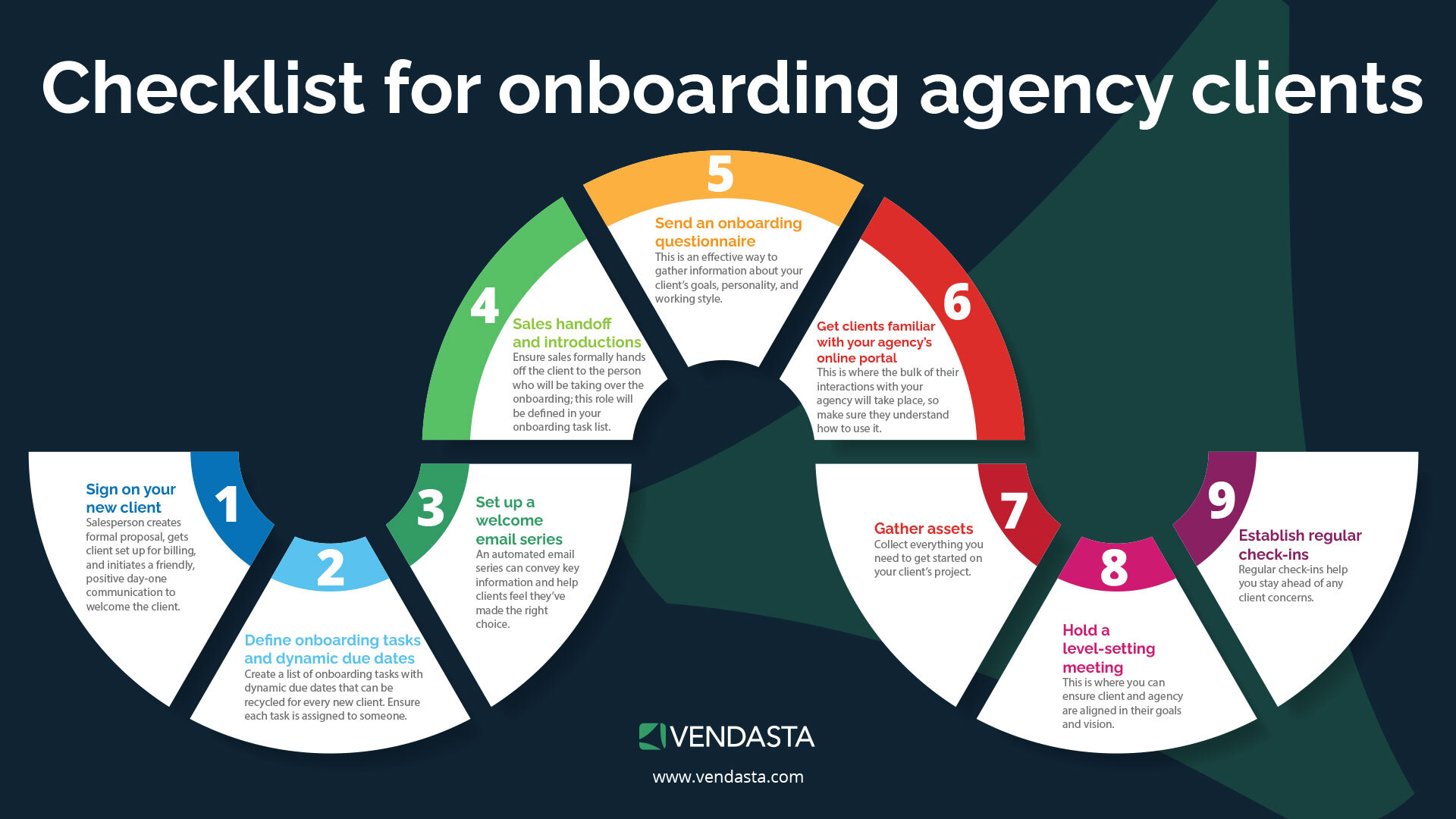Vendasta’s Michael Donauer on building a winning agency account management approach
As an agency owner, creating an effective agency account management strategy is crucial for maintaining strong relationships with clients and ensuring their satisfaction with your services.
A winning agency account management strategy helps to streamline communication, establish clear goals and expectations, and ensure that projects are completed efficiently and successfully. It also plays a key role in building and maintaining trust with clients, which is essential for long-term agency success.
Explore the tools, tactics, and expert advice you need to improve your customer experience structures. Download “Keep Them Satisfied: The 360 Guide to Customer Success” now.
In addition, a strong agency account management strategy can help to improve customer experience, as it allows your team to anticipate and address any potential issues or concerns that may arise.
By putting the right systems and processes in place, you can create a smooth, seamless experience for your clients and set the stage for a successful and productive partnership.
We spoke with Michael Donauer, a senior account manager at Vendasta. With years of experience working closely with many of the agency partners that have experienced the most growth with our platform, Donauer has gained valuable insights into the common mistakes that our partners make when building an agency account management strategy and how to prevent them from hindering success.
Through this Q&A session, Donauer shares his valuable knowledge and expertise to help set up your agency for success and growth.
What are the key components of a successful agency account management strategy?
There are two big pieces that stand out to me.
The first would be bundling solutions versus selling point solutions. Often, agency owners will come to us and they'll know a couple of things that they want to sell, but selling point solutions takes just as much work as bundling things together, which provides a better outcome for agencies.
There's an interesting statistic from our 2018 churn study, which found that if you sell a basket of four or more digital products together, your client is 80 percent less likely to churn.
The second really important thing is building strategic systems. Now, what is a strategic system? My simple definition, when I'm coaching partners, is something that you build once, but you use multiple times.
You don't want to have to build a brand-new package every time you want to sell a package. You could build a package that generally fits the needs of all your partners, and then tinker around the edges. You’ll be a lot more efficient.
So you don't need to have the perfect store, but if you have a package that encapsulates 80 percent of their needs, it becomes very easy to dial up or dial down what you sell based on how big or small your client is and where they’re located. For example, no two SEO quotes should look identical, and with Vendasta’s sales intelligence tool, Snapshot Report, and our Marketplace of 250+ solutions to resell, it’s easy to quote quickly and precisely every single time.
Pro Tip: Find your preferred SEO partner in the Marketplace, and bundle with Vendasta’s foundational products and services to instantly provide more value to your client.
How do agencies discover their ideal customer, and what should they do if they believe a prospect isn't the right fit?
I would start by thinking about who your current ideal customer is. Who's the customer that you have that you would want to clone a hundred times? You probably have an ideal customer. You just haven't done what the articles might tell you online about how to determine who that is.
But who's the person that you enjoy dealing with and working with and has the willingness to pay and fits in well with your services? You want to think about having a way to find those ideal customers that you want to deal with.
So if you’re starting from scratch or haven’t figured out your ideal customer, you want to consider A/B testing against two different verticals to see which has better engagement. Then you can build an outbound list and target, for example, lawyers and home services businesses and grow from there.
However, it should also be noted that, sometimes, a client or certain types of clients just aren’t coachable. And the best thing you can do is just call out that risk and assess if that risk—if accepting that account—detracts from how you want to grow your agency.
For example, we often find there is a mismatch between the amount of money they want to spend on digital ads versus their ambitions to go national. Sometimes, people are just disconnected from reality and you have to make a decision around whether the margin this client provides and the work this client takes is worth your time.
What are some best practices for onboarding new clients and setting expectations for the agency account management process?
My fastest growing partners have a lot of success when they have an agency onboarding checklist. So, everyone talks about onboarding, but I found that the definition of onboarding can vary quite a bit. A checklist cuts through all that noise.
This checklist will instantly remove uncertainty for clients and build trust by outlining the steps in the process. It's a good idea to have the checklist ready to go when a client pays, as this will reassure them about what comes next. An onboarding checklist can be particularly helpful if you have a complex product mix or list of solutions, as it can help to clarify things for the client.
In addition to helping to build trust and removing uncertainty, an onboarding checklist can also take some of the pressure off of you and your team as there are clear objectives and timelines around what needs to be done. Give your client a reason to follow your lead and contribute to their own success. Ownership is key and reduces blame down the road in a partnership.
What are some strategies for retaining and growing existing customer accounts?
I just had this discussion on a call with a partner who is based in Texas, and his eyes popped when we talked about “quoting with precision.”
This means taking the time to understand local businesses’ specific needs and priorities, rather than just making assumptions about what they want. By doing this, you can create a more accurate and cost-effective plan that addresses their needs.
To help with this process, use tools like the Snapshot Report, which give you a better understanding of how your prospects are doing online by grading their online marketing efforts (their SEO, ads, website, etc.). My most successful partners also say this tool clarifies what the priorities are. Again, having a living onboarding document or checklist can help to streamline the process and ensure that everyone involved is pulling their weight and meeting service level agreements.
Finally, leveraging Executive Report insights can help to retain and grow your customer base, while also providing opportunities for upselling and cross-selling through proof of performance.
Providing regular updates to clients through Executive Report insights is a valuable way to show the value that you are providing to them from the very start of the relationship. These updates can be emailed automatically on a weekly or monthly basis, or at your discretion depending on the needs of the client.
One of my partners inspired me with how she uses it with her clients and framed the report as a visual aid, where green and yellow lights indicate areas that are performing well and areas that will need improvement soon. This can help to make the report more engaging and easier for the client to understand.
How can agencies get more value out of their agency account management efforts?
One mistake I see is that everyone wants to go after those big flashy deals—those ones that if you get once per quarter, you’re set for the year. But there is a lot of volatility, especially with the strong prospect of a continued recession, surrounding the ability to retain all your business.
The current psychology of spending in a recession is interesting. What I’ve observed in meetings with partners is that local businesses aren't afraid of spending money on marketing but they're afraid of wasting money.
So the best thing that you can be doing is increasing the value that you deliver to your clients. Hopefully people reading this blog have read the book by Josn Nelson, Seven Figure Agency*, where he says if you're not charging at least $1,000 a month, you're not providing enough value.
Now, how do you do that?
I've spent my year focused solely on one simple question: How can I increase my partners’ average annual revenue per account (AKA iincrease their average deal size) through Vendasta?
If I can transform how an agency works and help them get to $1,000 or $1,500 a month from each client instead of $500, with the same effort, they will double or triple their bottom line. I’ve seen this happen multiple times this year. Then, my clients don't need to get three times as many customers.
Pro tip: Focus on getting better customers by delivering better value.
In these uncertain times, it's especially important to focus on providing as much value as possible to your clients. This can help you stand out from your competitors and make it more likely that your customers will choose to continue doing business with you.
This could mean offering additional services or products that meet their needs, providing personalized support, or simply being available to answer their questions and address any concerns they may have.
Change the way you sell today
Ultimately, the key is to always be looking for ways to add value for your clients, and to be proactive in communicating the value that you provide as part of your agency account management strategy. This will help you stand out in a crowded market and give your clients the confidence they need to choose you as their partner.



